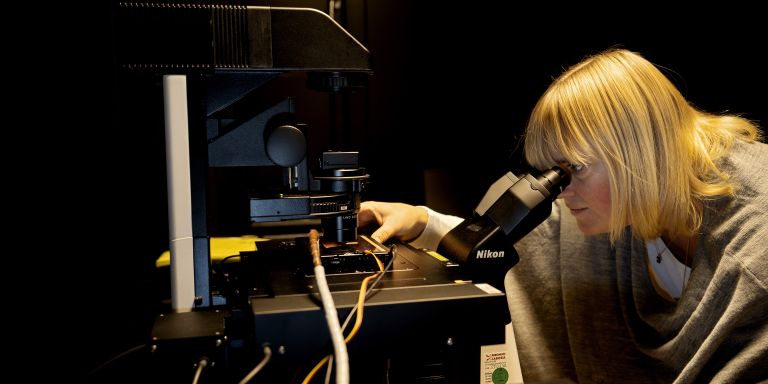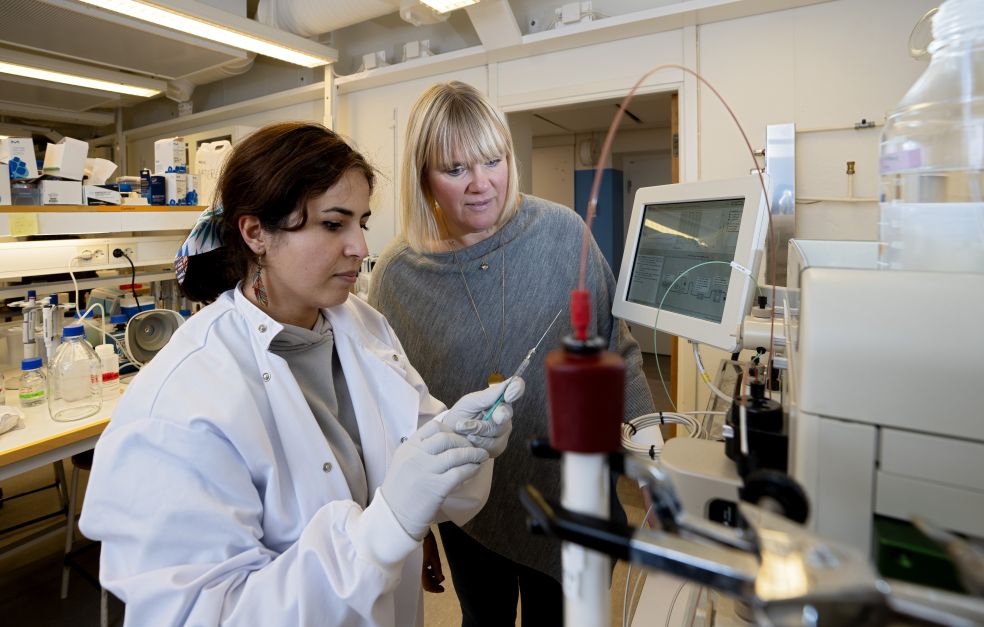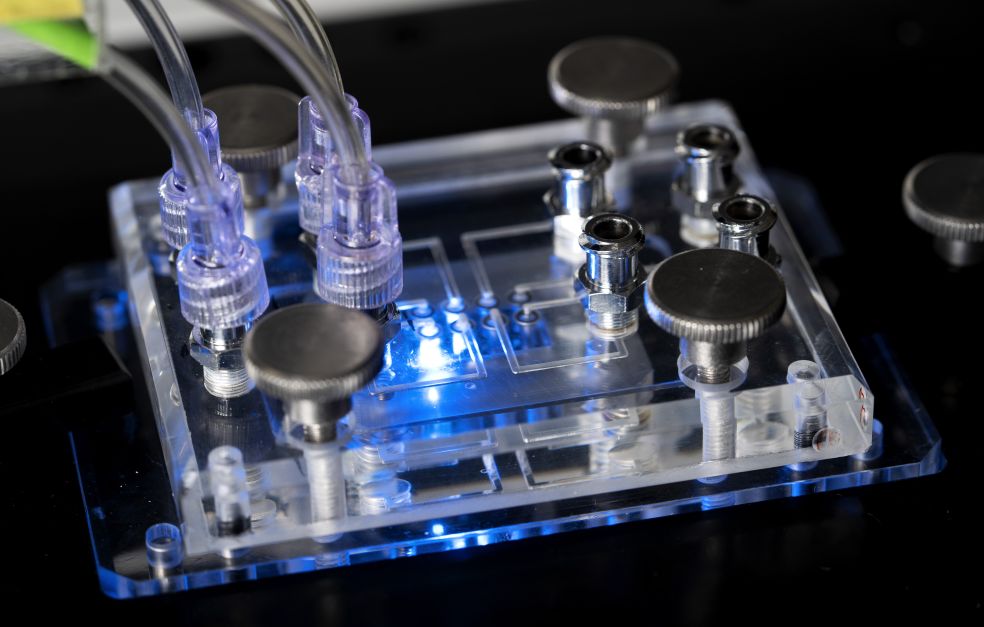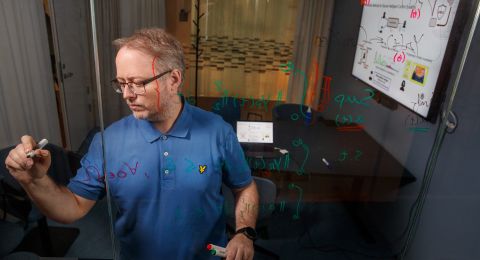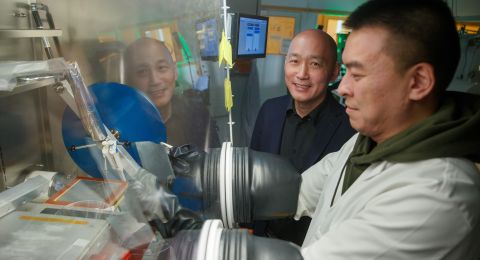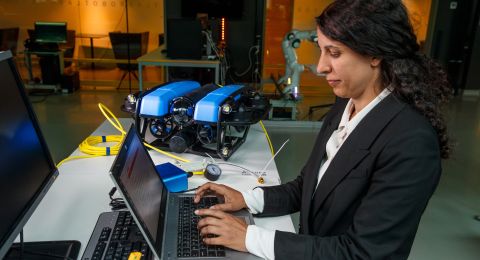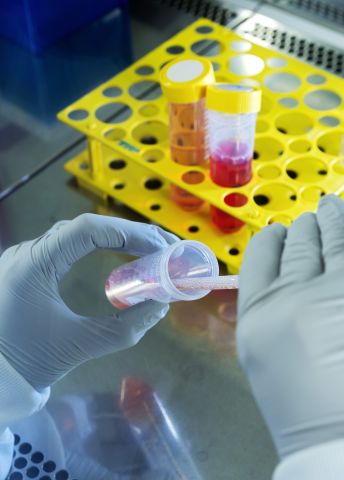
Project Grant 2022
Nanochannel Microscopy for Single Exosome Analysis
Principal investigator:
Elin Esbjörner, Associate Professor
Co-investigators:
Chalmers University of Technology
Christoph Langhammer
Fredrik Westerlund
University of Gothenburg
Giovanni Volpe
Karolinska Institutet
Samir El Andaloussi
Institution:
Chalmers University of Technology
Grant in SEK:
SEK 29.1 million over five years
Exosomes are ultra-small, complex and vital to our bodies, but we still do not know much about them. They are minute membrane-bound vesicles that act as an advanced communication tool between our cells. Researching at Chalmers University of Technology, Elin Esbjörner likens them to packages sent out by the cells in differing sizes and with differing content – and sometimes, albeit not always, with a clear address label.
Researchers originally thought that exosomes were waste. That they can act as messengers between the body’s cells is a fairly new discovery, spurring interest in the research field over the past few years. One key goal is to learn more about the fundamental function and composition of exosomes, and this is also the focal point of a new research project funded by Knut and Alice Wallenberg Foundation.
“There are so many unanswered, fundamental questions about exosomes. Yet we believe they play a key role in many diseases, such as cancer and Alzheimer’s, and that better knowledge about them may pave the way for better diagnostics and new drugs. That’s why this project is so exciting. If we can fill in the gaps in our knowledge, we will be able to use exosomes much more effectively than is currently possible,” explains Esbjörner, who is heading the project.
In-depth knowledge of individual particles
There are many ways of studying exosomes in a general sense, but far fewer methods for examining them individually. And this is precisely the aim of the project, in which Esbjörner hopes to gain a better insight into the world of exosomes. She stresses the importance of being able to spot differences between exosomes in order to identify the types of exosomes that are key to intracellular communication, thereby offering potential for use in therapeutics. This will require more specific knowledge than mean values from samples containing all exosome types.
Esbjörner elaborates:
“Our aim is to create a platform to study individual exosomes in greater detail than has so far been possible. This will enable us to obtain different kinds of information simultaneously, and hopefully answer fundamental questions about how different exosome types are formed, communicate and are composed. This may in turn provide answers about why cells secrete the substances they do, and how other cells receive exosome packages.”
A new kind of microscopy
To achieve their goal, the researchers want to build an analytical tool for a new kind of microscopy. It involves passing the exosomes through a chip containing nanochannels. This will enable them to identify and analyze exosomes using minute quantities of biological material, and to examine each particle individually over time.
“Ideally, we want to develop a method of studying the whole chain, from secretion of the exosomes to their delivery. In parallel, also on the chip itself, we can culture cells that secrete exosomes. We can subject these cells to stimuli of various kinds to gain more knowledge, right down to single-cell level, about the exosomes that are secreted, and how they change over time,” Esbjörner explains.
She hopes the project will help to unlock many medical doors, including those leading the way to protein-targeted drugs of the future.
“When we know more about exosomes, we will also better understand how to control their vital processes. Hopefully, we’ll be able to use exosomes as carriers of protein-based drugs in the body. It’s very satisfying to work on something that is meaningful and may help to improve human health,” she says.
Close collaboration vital
She emphasizes that a central success factor in the project is the strategic collaboration between project members, made possible by the grant from Knut and Alice Wallenberg Foundation. The research is taking place along the boundaries between biology, chemistry and physics, and involves researchers from Chalmers University of Technology, the University of Gothenburg and Karolinska Institutet. This creates great potential for development of new, ground-breaking knowledge, as Esbjörner stresses:
“It’s a great feeling being able to work on such an exciting project for an extended period, with a team whose members all make vital contributions. This project has enormous potential, and none of us could have made it past the finishing post alone. We complement each other very well indeed, and this is the kind of collaboration that enables us to achieve results. We have ambitious goals, an extraordinary team and cutting-edge technology at our disposal. I believe we have very good prospects of success,” Esbjörner says.
Text Ulrika Ernström
Translation Maxwell Arding
Photo Johan Wingborg
